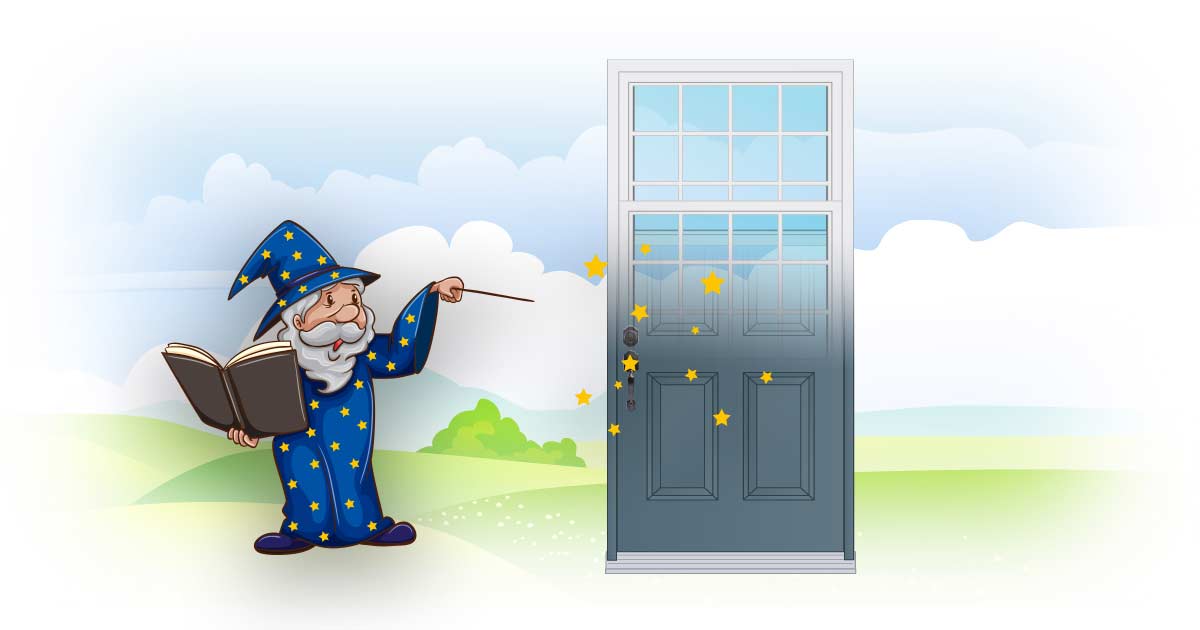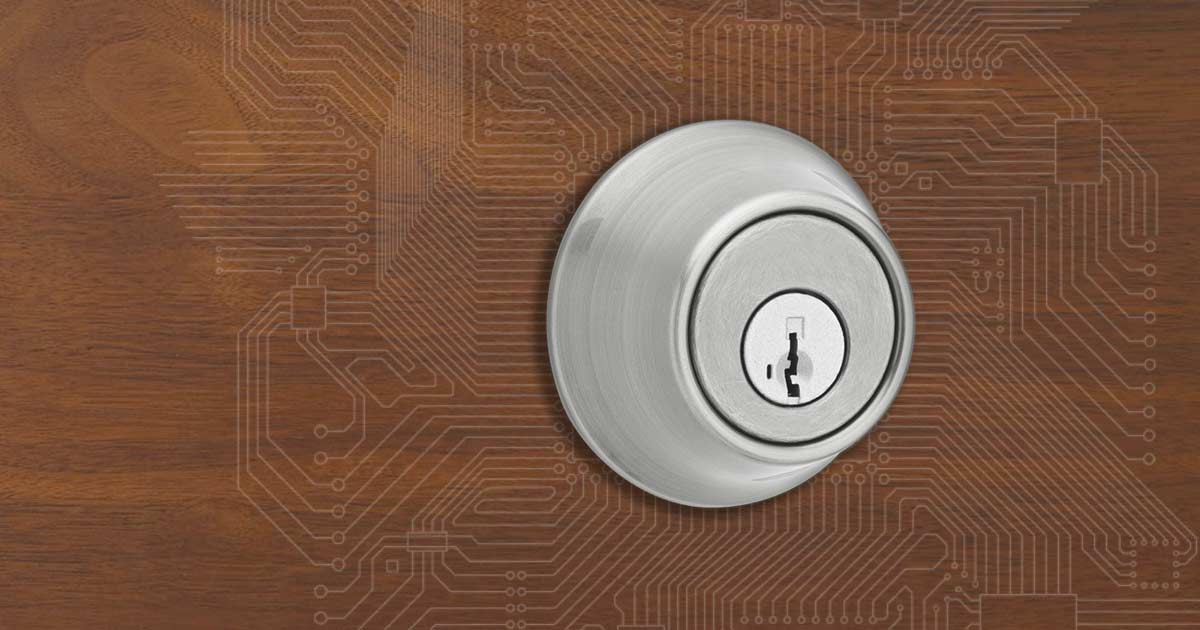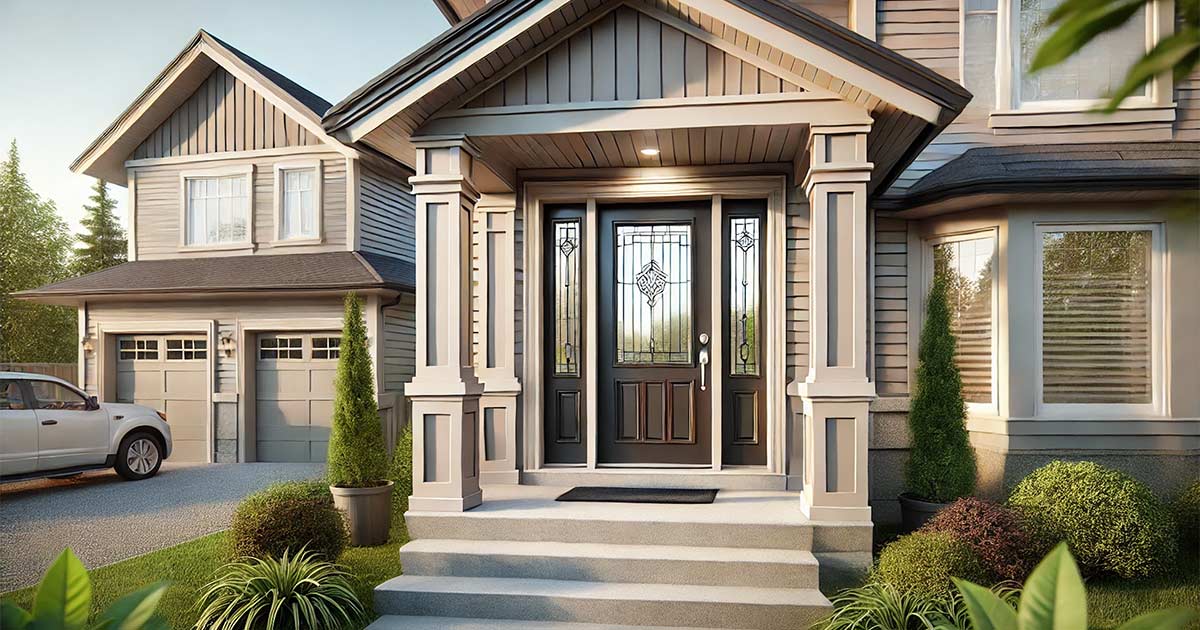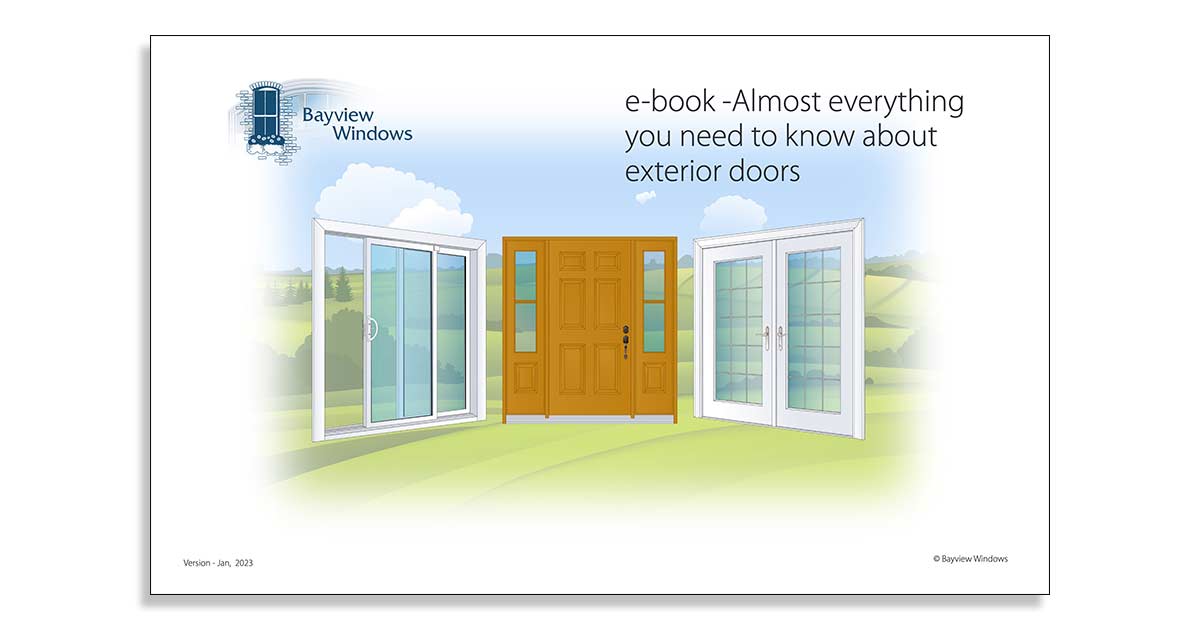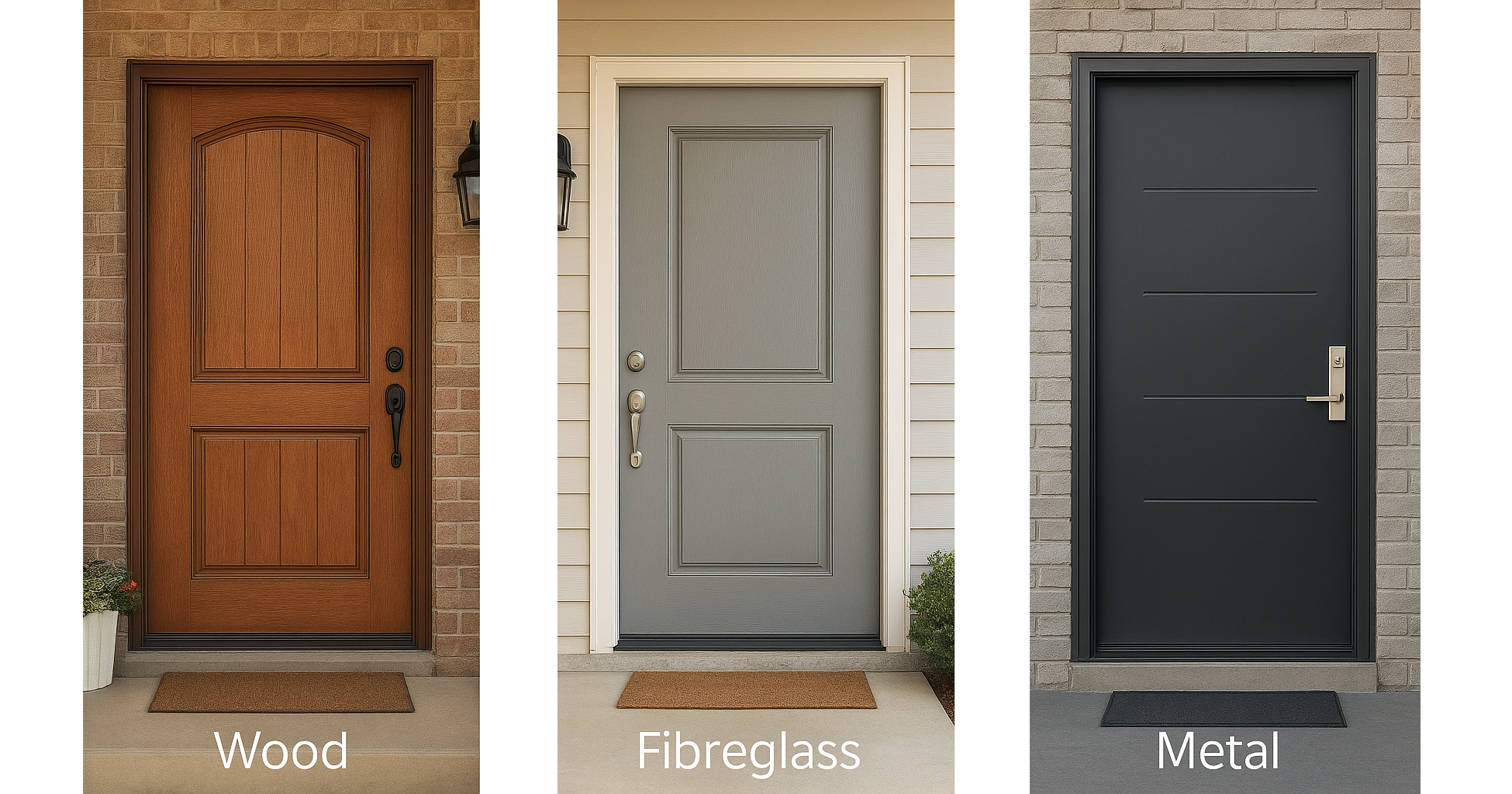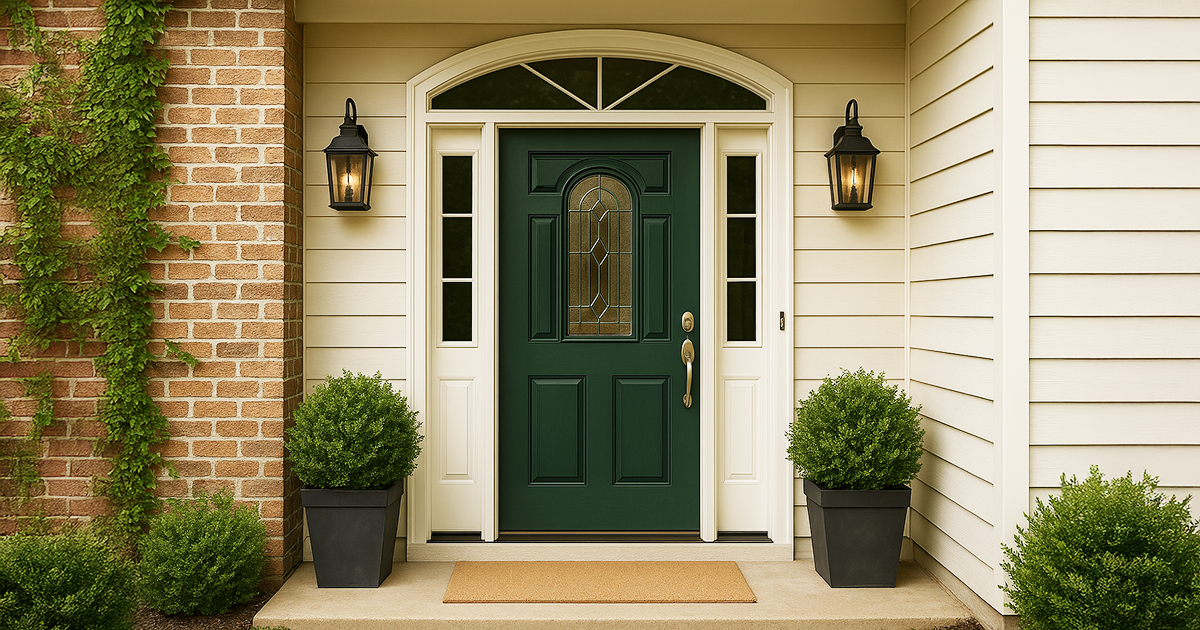Insights > Article > Posted: 2023-Dec-06, Updated: 2025-Oct-07
Door Swing Direction: Which One is Right for Your Home?
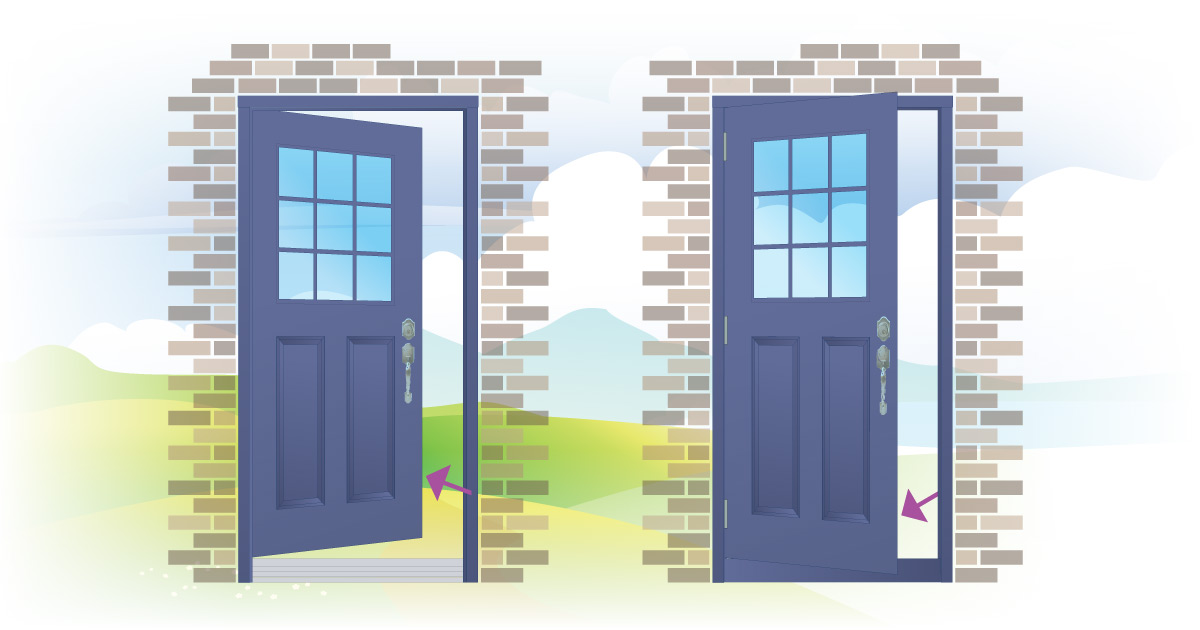
In this article:
Both in-swing and out-swing entrance doors have their advantages, but which is right for your home? In this article, we’ll walk you through the pros and cons of each option, highlight key building code considerations, and help you decide which swing direction best suits your home’s layout and your lifestyle.
In-swing doors (push to open - push to close)
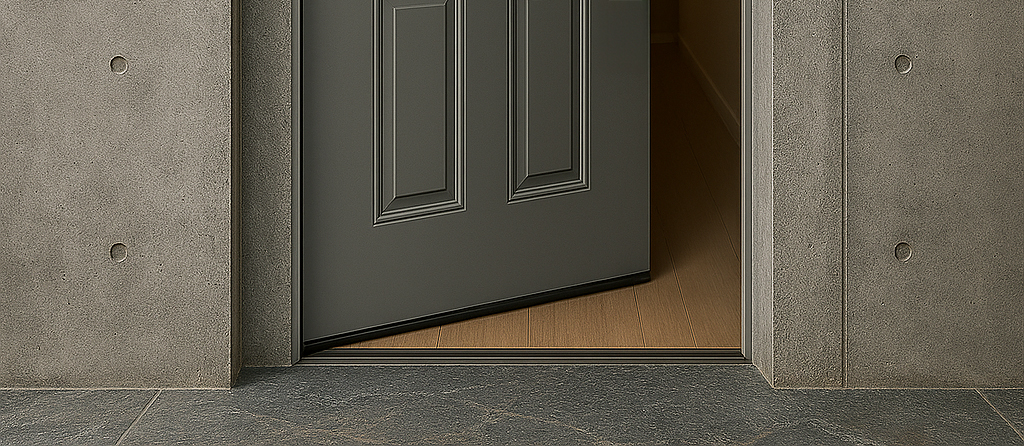
In Ottawa, most front entry doors open inward. Installers often point to snow buildup as the reason, an outward-swinging door could be blocked after a heavy snowfall. This inward-opening tradition spans single-family homes, townhouses, condos, and rental units. Still, just because it’s the standard doesn’t mean an outward-opening door isn’t worth considering for your home.
In-Swing Pros
- Snow buildup won’t block the door.
- You can close it without stepping outside.
- Easy-to-use security latch.
- It can stay open and works well with storm doors for ventilation.
- Hinges are hidden from the outside.
- Easier access for wheelchair users.
- The door won’t swing out onto visitors.
- Compatible with security devices.
- Door removal is simple; just pull the hinge pins.
In-Swing Cons
- Requires indoor space for the swing (reduces usable space).
- More vulnerable to wind and water.
- Harder to exit quickly in emergencies.
- Difficult to open if someone has fallen against it.
- Less secure, easier to force open than an outswing door.
Out-swing doors (pull to open - pull to close)
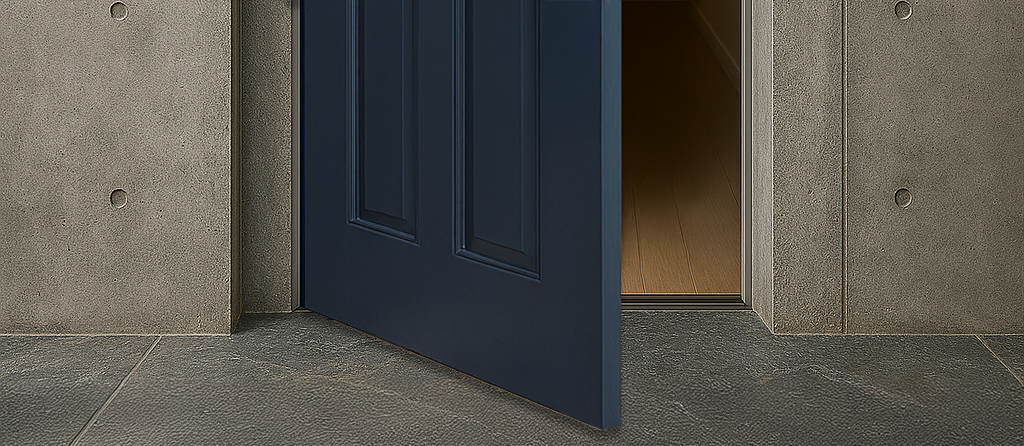
Outswing residential entrance doors are not common in the Ottawa area (about 5% of our entrance door orders represent outswing doors), but that doesn’t mean they are not allowed for residential entrance doors under the Ontario Building Code (See OBC 9.7.5.2.(8) & OBC 9.9.6.5. & 3.3.1.10).
Commercial buildings' entrance doors, on the other hand, must always open outward (outswing, not inswing) to prevent possible issues during situations such as fire - quick evacuation.
Out-Swing Pros
- Saves space inside the house.
- Tighter, more secure fit since the doorstop is on the inside.
- Wind and weather press the door tighter for better insulation.
- Harder to force open, improving security.
- Wind and rain can’t blow the door inward.
- The compression gasket creates a weather-tight seal that’s easy to open.
- Excellent choice for high-security areas.
Out-Swing Cons
- Hinges are exposed outside; require tamper-resistant ones.
- Fewer security device options (chains, guards).
- Door removal requires unscrewing hinges, not just pulling pins.
- It can be blocked by heavy snow buildup.
- Harder to open and close for wheelchair users.
- Must step outside to close it.
- Awkward to open outward if visitors are standing at the door.
- More likely to blow open or shut in strong winds.
- Wind can make it harder to operate.
- Can’t use a storm door, though retractable screens are an option.
In-Swing/Out-Swing setups (single doors)
Inswing left (IL):
Hinges are on the left of the door - the door opens into the house or away from the opener.
Inswing right (IR):
Hinges are on the right of the door - the door opens into the house or away from the opener.
Outswing left (OL):
Hinges are on the left of the door - the door opens toward the opener or out of the house.
Outswing right (OR):
Hinges are on the right of the door - the door opens toward the opener or out of the house.
Building codes to consider
Exterior doors in homes, rental units, and businesses provide security and emergency exit routes. Building codes set standards for their construction, size, and swing direction. Since local rules can vary, it’s important to check guidelines before installing inswing or outswing doors.
Ontario Building Code (OBC) | Direction of Door Swing
The Ontario Building Code is a regulation under the Building Code Act. It establishes detailed technical and administrative requirements and minimum standards for building construction.
International Building Code (IBC)
The International Building Code (IBC) is the foundation of the complete family of international codes. It is an essential tool to preserve public health and safety that provides safeguards from hazards associated with the built environment. It addresses the design and installation of innovative materials that meet or exceed public health and safety goals.
National Fire Protection Association (NFPA)
Exterior doors require single-operation egress, which means that a person should be able to unlock and open the door using only a single action.
Accessible Canada Act (ACA)
Although this act applies mostly to public buildings and spaces, it involves identifying, removing and preventing barriers in federal jurisdiction. TheAccessible Canada Act (ACA) not only applies to the construction of new spaces and buildings, but it also governs organisations that offer goods and services; employ Canadian workers; provide accommodation; use a building and/or operate a business.
Summary
Choosing the right entry door swing, inswing, or outswing affects your home’s space, security, accessibility, and weather protection. Inswing doors are common in Ottawa, offering convenience, hidden hinges, and compatibility with storm doors, while outswing doors provide a tighter, more secure fit and better resistance to wind and rain. The best choice depends on your home’s layout, local climate, and personal needs.
Related articles
Ready for a new exterior door?
Discover the benefits of inswing and outswing options and find the perfect fit for your home. Call us or use our contact form, we’ll answer all your questions and help you choose with confidence.
Considerations
Window into a Door
